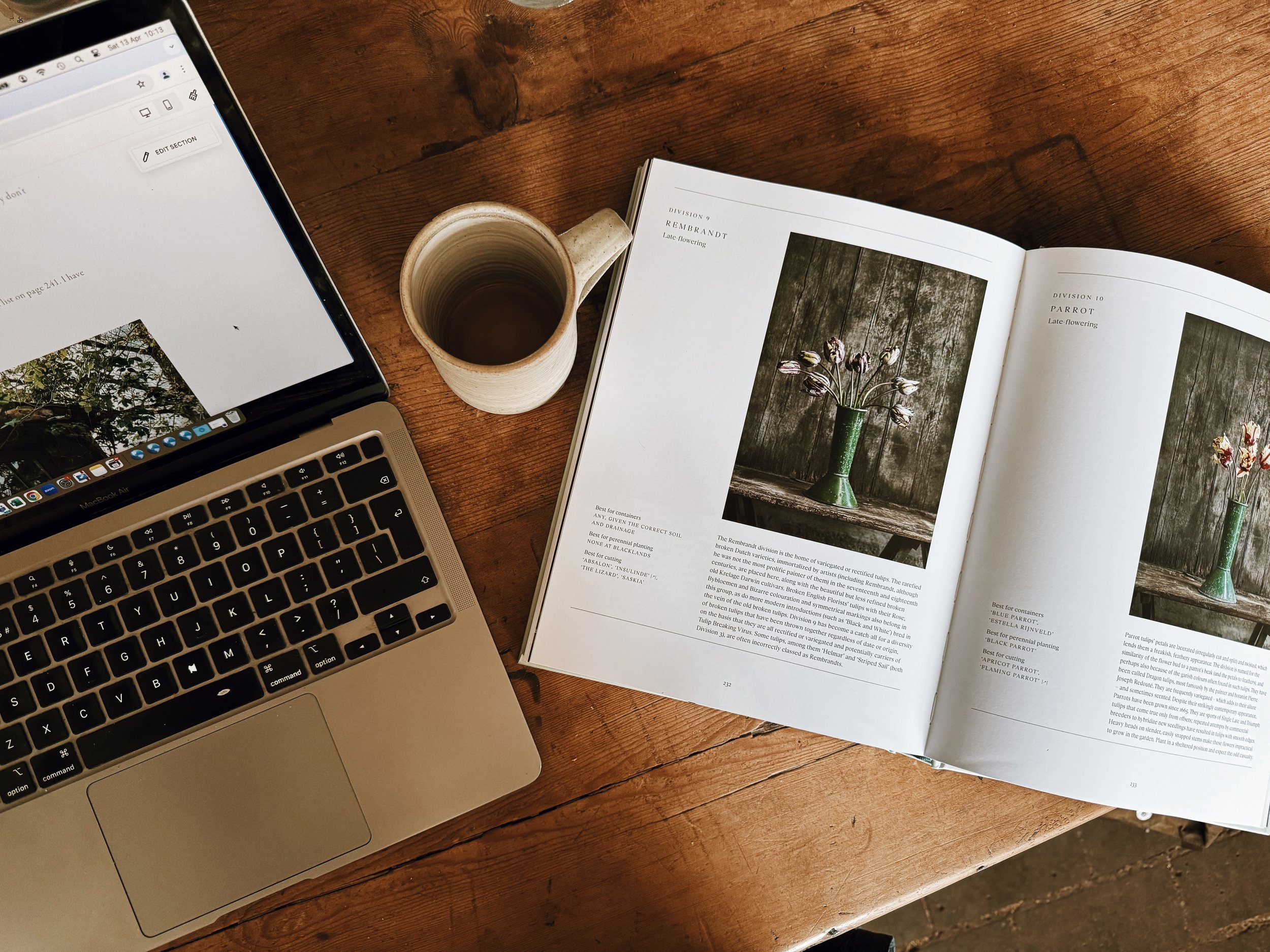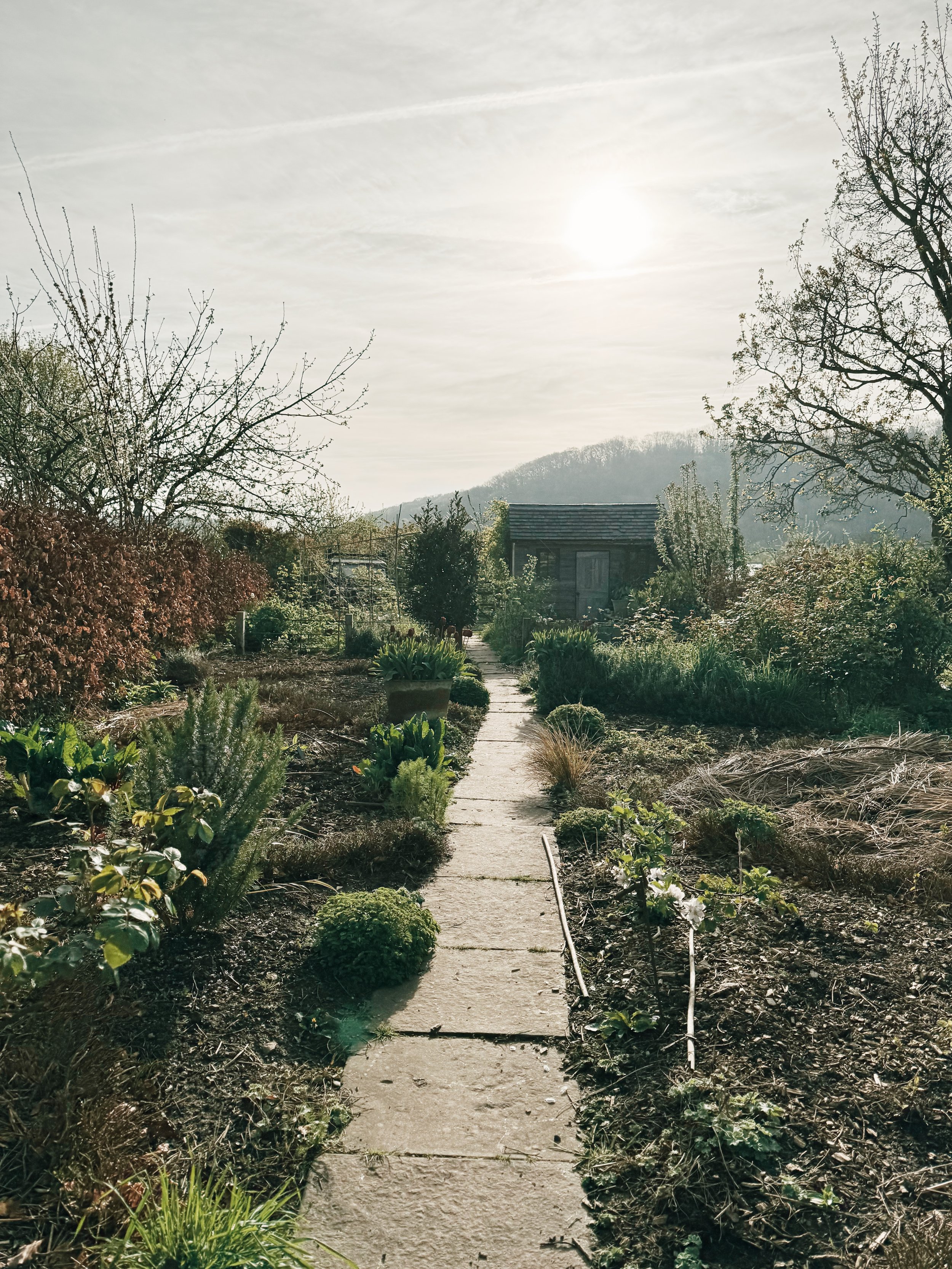Can we talk about tulips?
Closing the gate
This week, I filled in another bundle of forms and transferred another chunk of money to the Soil Association. The new bits of garden are now also officially in organic certification. You know that that means?
It means whatever is in the garden is all I have.
It means no more tulip bulbs.
Don’t ask me how I know but I do know that all the big bulb sellers are in Holland right now, desperately trying to track down the next big thing, and jostling for the new Vovas (which was, in turn, the new Belle Epoque). The flowers that they see and select in bloom now will be deadheaded, the bulbs lifted, and they will start to appear to be added to our carts in all the usual places by autumn.
I need to say at the outset that I have been there. I have access to all the usual bulb buying places but also, dangerously, some of the big wholesalers. And I tell you, when tulips bulbs in glorious colours are priced for pennies, it is very difficult not to go completely overboard and just get sacks and sacks of them. And then, the next year, do it all over again.
Tulips as annuals
Which brings us to the first problem, which is that tulips are generally treated as annuals. And they are not light and easily transportable like a little packet of seeds, they are shipped all around the world, and they take a huge amount of energy and resources to grow something that flowers (joyously, I will concede) for a matter of weeks and then is put on the compost.
The solution? Could we buy once and buy good? There are some tulips that are in it for the long term. Like love, duration and flashiness do not always go hand in hand so, like marriage, you might have to compromise to get them to last.
From my very earliest time in flower growing, I was told that the viridiflora tulips (the ones with a little streak of green) were the best for perennializing, but unfortunately, I don’t like them much. I will stretch to a ‘Spring Green’ but that’s about it. So, I turned to the expert, and opened up Polly Nicholson’s glorious new book The Tulip Garden. This is therefore advice I am very much going to follow.
Best for perennial planting:
‘Dom Pedro’ – best of everything
‘Queen of Night’
‘Ballerina’ – I hear a rumour they are scented
‘Black Hero’
This is just a snippet; if you have the book, there is a full list on page 241. I have taken notes.
Chemicals & the bees
Are you ready for the second problem? This is even less cheerful. I had this on my radar for a little while and then Dan Pearson went all in and called it. Tulip bulb production, like the making of laws and sausages, is best not examined too closely if you want to sleep easy at night.
Dan said:
‘In 2021 approximately 14,400 hectares of Dutch farmland was dedicated to the production of tulip bulbs. This is where almost all commercially grown tulip bulbs come from and the majority of them are treated with a range of phosphate fertilisers, fungicides, pesticides and herbicides. All of these chemicals persist in soil and water and have a seriously damaging effects on soil-living creatures and mycorrhiza. In the case of systemic insecticides (although the use of three key neonicotinoids has been banned in the Netherlands since 2021) these can persist in the bulbs after lifting, so that bees visiting your tulip display will be directly affected and transport poisoned pollen back to the hive. Dutch studies have also shown that people living in the vicinity of commercial bulb growers have higher levels of these chemicals in their bodies with as yet unknown effects on biology and health, although in animals they are known to affect reproductive health and the respiratory system.’
Full blog post here.
I have lost track of whether the UK has banned or un-banned noenicitinoids but the words ‘poisoned pollen’ makes my blood run cold. I cannot in all good conscience plant something that kills the bees. This isn’t like washing a non-organic apple and hoping for the best, the rules about flower production are the wild west compared to what farmers are allowed to put on food. I didn’t know what I didn’t know, but now I know, I feel dreadful.
There are two possible options here and, rather conveniently, one of them is the same as above. The tulips I have in the garden are the tulips that I will have forever, and I will not risk importing anything dreadful in on new bulbs.
The good way to get more bulbs
Although can I live without ever growing Emperor tulips again? I can let Belle Epoque go – just – but I am not sure a spring garden without Queen of Night is something I can cope with. There is a compromise position, which is that there are a few suppliers now who can sell you organically produced bulbs. They are more expensive, but there was something so absolutely wrong that they cost pennies in the first place, so I am ok with that.
Fewer. Better. And I will cherish them forever.
Perennialising tulips:
Do not overwater, especially if they are in containers. (If they are not in containers and unless you have unbearably sandy soil, make sure you have added drainage.) However, they do need some, so half a watering can with a capful of organic seaweed feed every week once the leaves are poking through the soil will help with stem length. Careful once the flower buds come through though, seaweed can stain. Once the flowers are fully out step back a little bit, you don’t want the stems to rot and a long tulip stem is quite a vulnerable thing.
When I am trying to give them the best care, it always helps me to think about where plants come from. Tulips are from the rocky mountains of Iran, Russia and Turkey. Yep, that means cold winters, and hot dry summers. Bake them. This is where pots really come into their own. Tulips flowering in full sun will go over quite quickly, so I have them flower in the courtyard next to my morning coffee bench. East-facing, morning sun, but it goes round the cottage quite quickly, so just enough sunshine to keep them happy and thriving, but not enough to stress them out too much. Once they are done, get them in a sun-baked spot.
Don’t cut them to the base if you want them to come back. The more foliage is left on, the better it will photosynthesise and feed the bulb up for next year. No, I can’t resist either, so I cut to the top of the second leaf. Not as willowy and elegant as pulling up from the bulb, but we are all making sacrifices here.
If you don’t cut them, and I admire your restraint, then deadhead them by just snapping the spent flowers off. Unless you are planning to grow tulips from seed, seed production is not on anyone’s to do list. Get that energy down to bulb.



